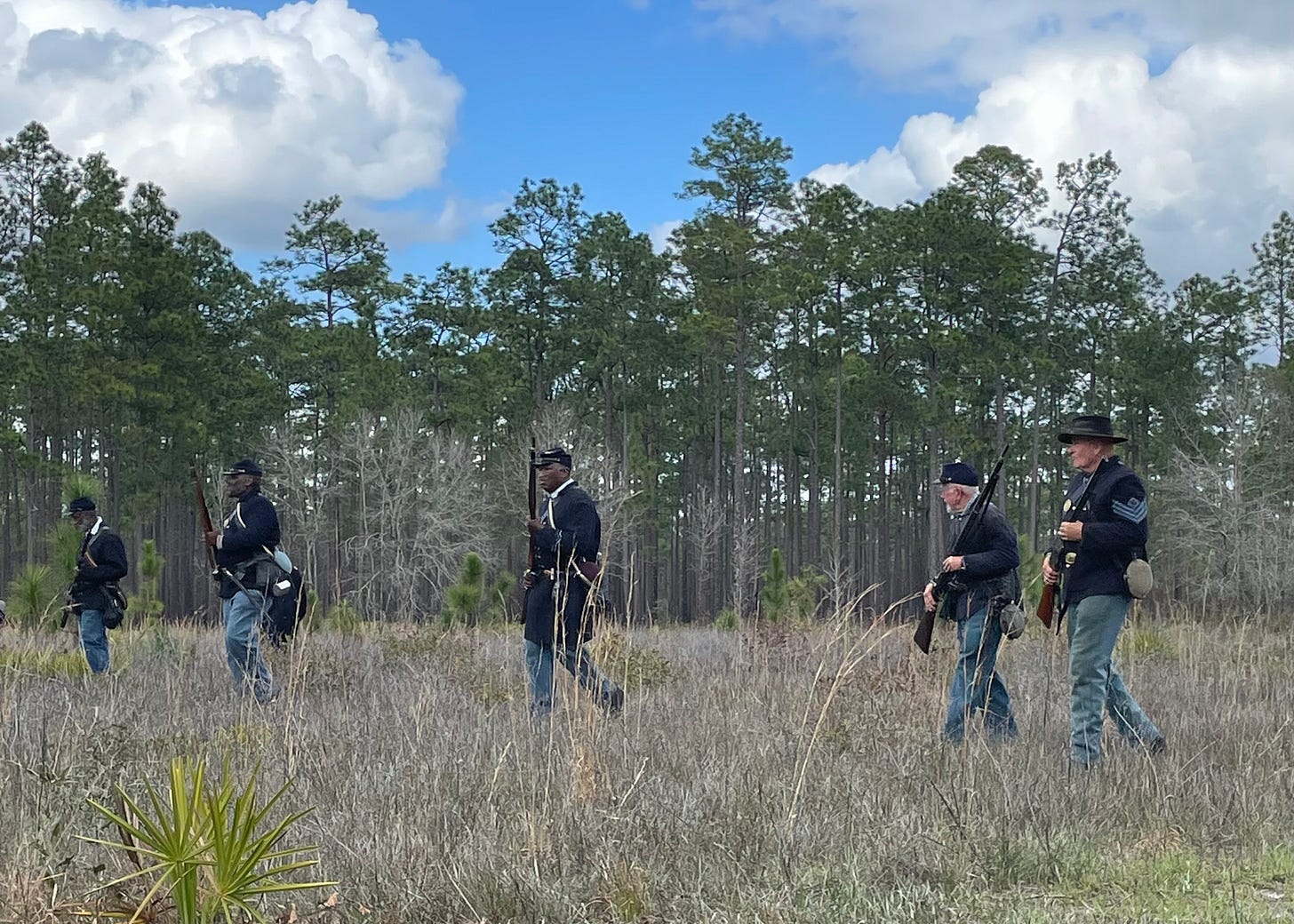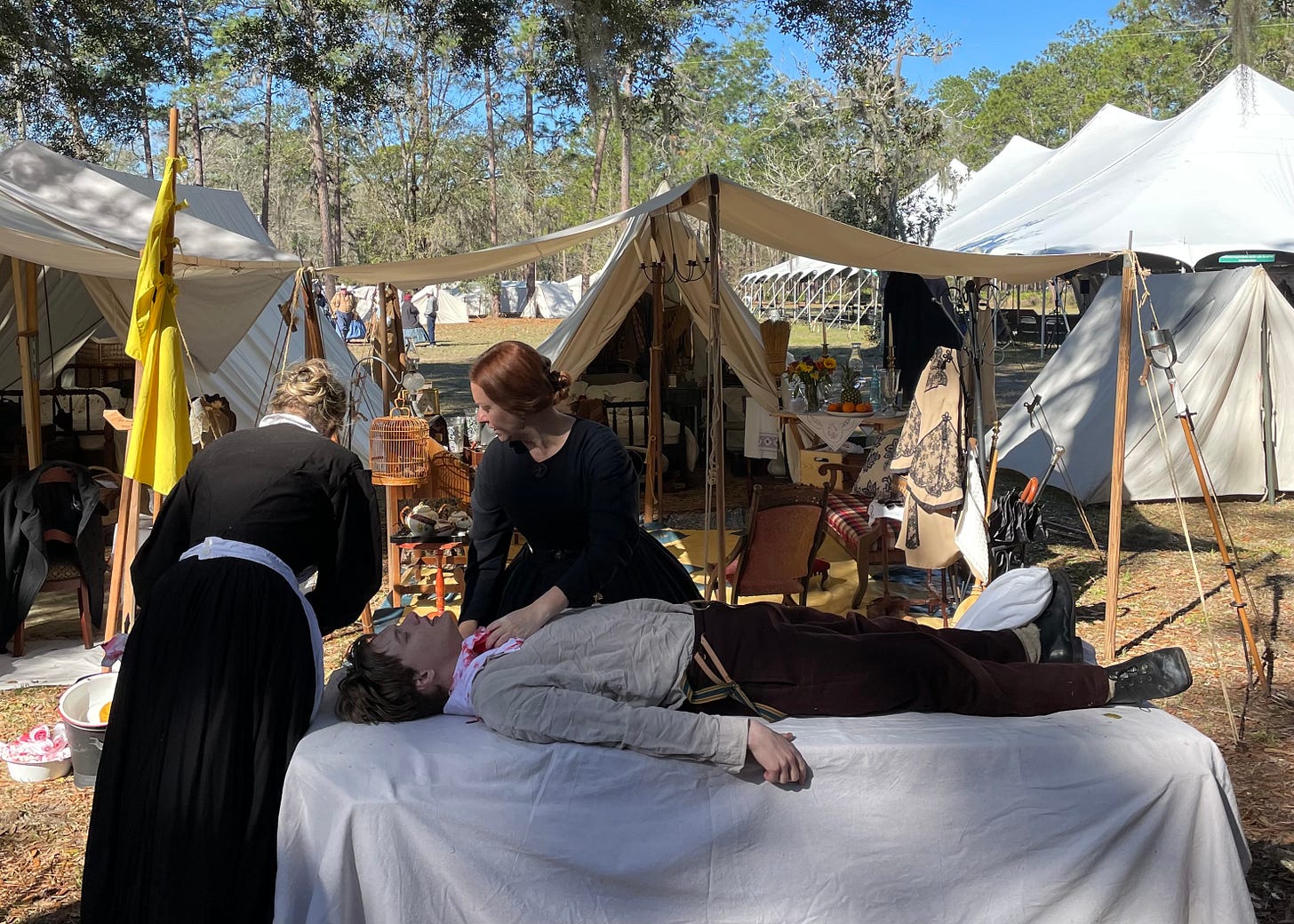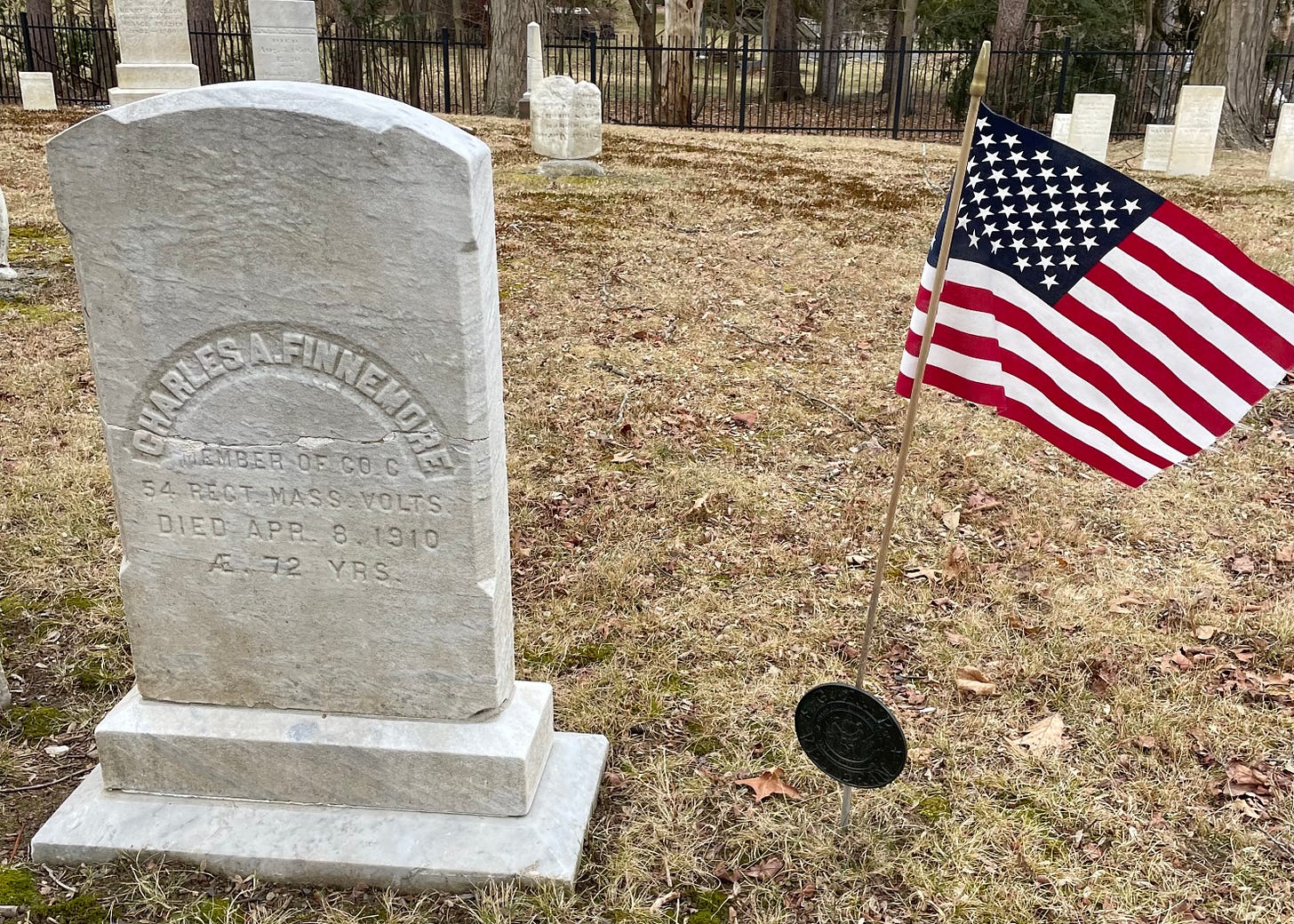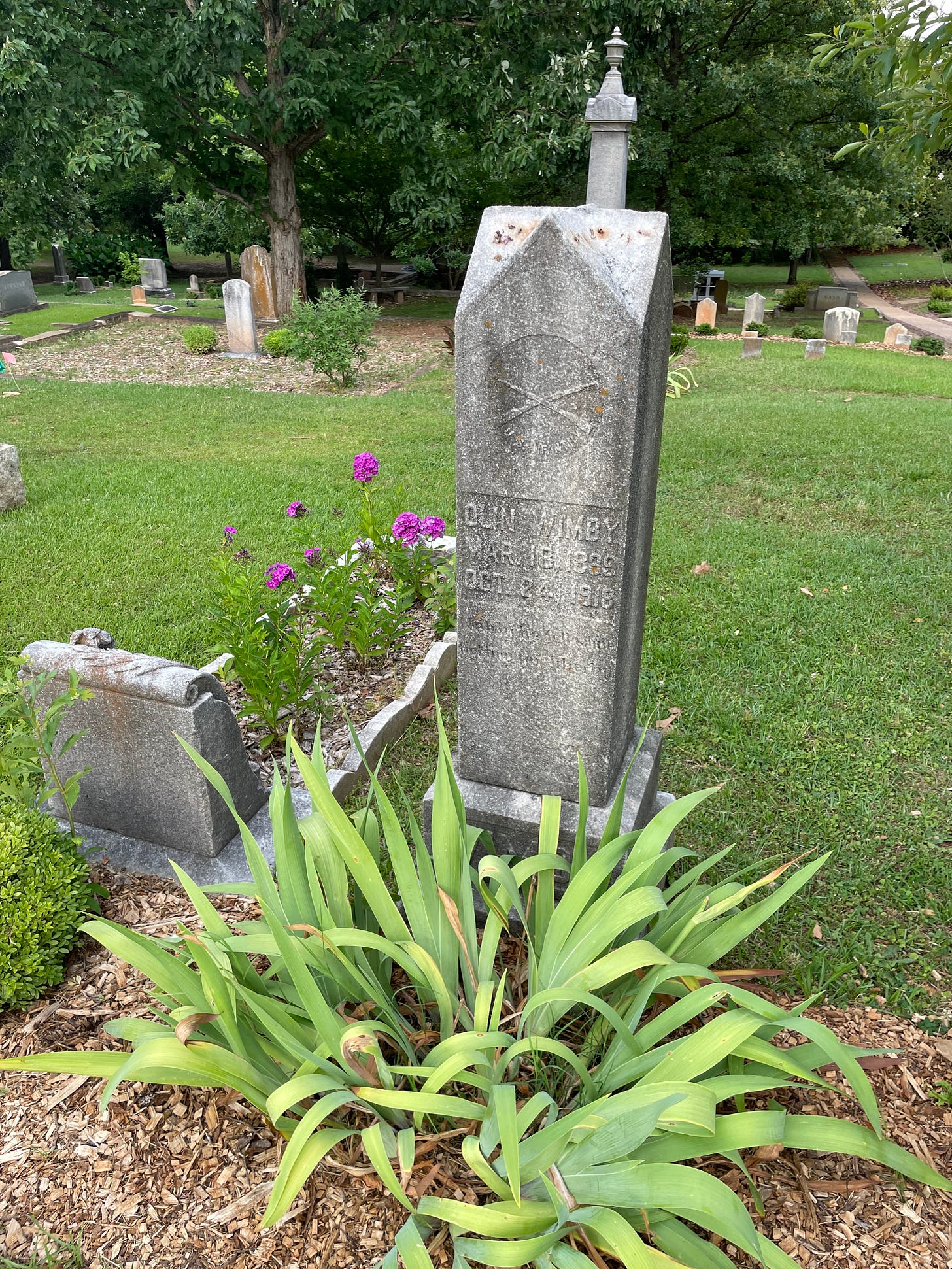Battle of Olustee
Today is the 160th anniversary of the Battle of Olustee, which was fought in Baker County, Florida, on February 20th, 1864. I’d never heard of this battle until a couple of years ago when I looked up Civil War reenactments within driving distance of Atlanta. Even though it wasn’t a large battle, it was a brutal one, with both sides suffering heavy casualties (34% of Union soldiers and 19% of Confederate soldiers according to Wikipedia). The battle is considered a Confederate victory with Union troops forced to withdraw to Jacksonville.
Last year I attended the reenactment, driving down to Lake City, Florida, late on a Friday after leading evening classes at the gym. I stopped at Buc-ees on the way and tried their Texas cheesesteak burrito. I stayed two nights at the local LaQuinta, drinking one hotel beer each night, and I attended reenactment activities on both Saturday and Sunday.
I wanted to make this trip because I’d been writing a piece set in the Civil War era, and I knew it’d be helpful to have a better understanding of what circumstances were like on the battlefield, what life was like for soldiers in camp, and to observe standard medical practices at the time. The medical demonstration was very bloody.
I was also interested in the role that Black soldiers played in this particular battle because I’d read that the famous 54th Massachusetts Regiment fought there. In addition, it was mentioned on the Battle of Olustee history website that Confederate troops continued to target and kill Black soldiers even after the fighting had ceased.
This wasn’t addressed in the reenactment, and I didn’t learn much more about it there other than confirming with someone knowledgeable of the history that there was evidence for it. Recently, Marvin-Alonzo Greer who publishes as magthehistorian on Instagram released a video about the mortality disparities Black Civil War soldiers faced and included some primary accounts of the violence Black soldiers endured after being wounded, surrendering, or taken prisoner at Olustee as well as at other battles—this was not an isolated incident.
At the reenactment, there was programming highlighting Black experiences during the Civil War including a Frederick Douglas reenactor and storytelling from a local history group. From the latter, I learned the story of Robert Smalls, an enslaved man who worked on a Confederate ship during the war and commandeered the vessel to free himself and his family. He turned the boat over to the North and joined the Union forces.
Amherst
Last year around the same time as my trip to the Battle of Olustee, David and I were facing a big decision. He’d been offered a job at Amherst College, a place I’d never been, and in order to visit before the deadline to respond to the offer, I would have had to skip the reenactment. Figuring if we moved to Amherst it would be much harder to travel to Florida the following year, I decided to stick with my initial plans and take a chance on uprooting my life to a place that I’d never been.
It’s worked out. And this year, even though I’m in Amherst, far from Florida, it seems like the Battle of Olustee has followed me here.
Recently, I attended an on campus reception for the Ancestral Bridges exhibit, which focuses on the history of the Black community in Amherst. One of the artifacts was a roster of Civil War soldiers, including Charles Finnemore, who was enlisted in the 54th Massachusetts Regiment. The label for the piece indicated that he’d been wounded in the Battle of Olustee, and the roster itself said he’d participated in the Battles of James Island and Morris Island. During the latter, which is also known as the Second Battle of Fort Wagner, the 54th Massachusetts led a historic but deadly charge that inspired many other Black soldiers to enlist and was later depicted in the movie Glory.
Shortly after I attended the Ancestral Bridges reception, I was walking in West Cemetery in downtown Amherst, and Charles Finnemore’s grave caught my eye. I’d seen it before, the cemetery is not large and its right next to the path, but that day it gave off an energy like it wanted to be acknowledged. I snapped a picture. I wasn’t sure then if it was the name I had read on the roster, but I went back to the library later to confirm.
Charles Finnemore survived the war and lived to be seventy-two years old according to his gravestone.
There’s another story about the 54th Massachusetts Regiment at the Battle of Olustee. According to Wikipedia, during the retreat, a train carrying wounded Union soldiers broke down, and in order to prevent the men from being captured, the 54th pulled the train using ropes three miles with just their own manpower and then another seven miles with the help of horses.
I wonder where wounded Charles Finnemore was in all of this action. On the broken down train? Walking alongside it? Pulling it despite his injury? Somewhere else?
Until Next Time
Black soldiers fought for freedom and equality during the Civil War, but their fight for recognition in the armed forces didn’t end with the Union victory. During World War I, Black soldiers enlisted with the hope that their efforts would earn them recognition at home where segregation and unequal treatment were rampant, especially in the South.
At Oakland Cemetery in Atlanta, the stone of Private Olin Wimby, a Black soldier who died during World War I in France, has this epitaph:
Nobly he fell while fighting for liberty.









I really enjoyed this one. I just found a book about African American soldiers who fought in D-Day i want to read soon. Thanks.